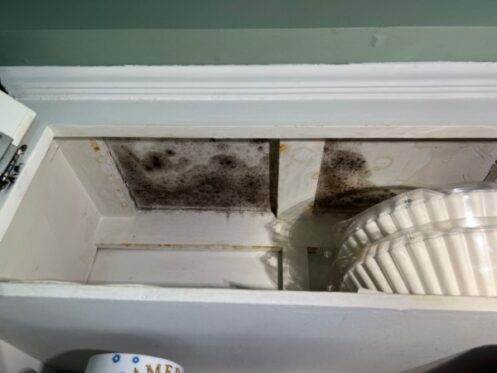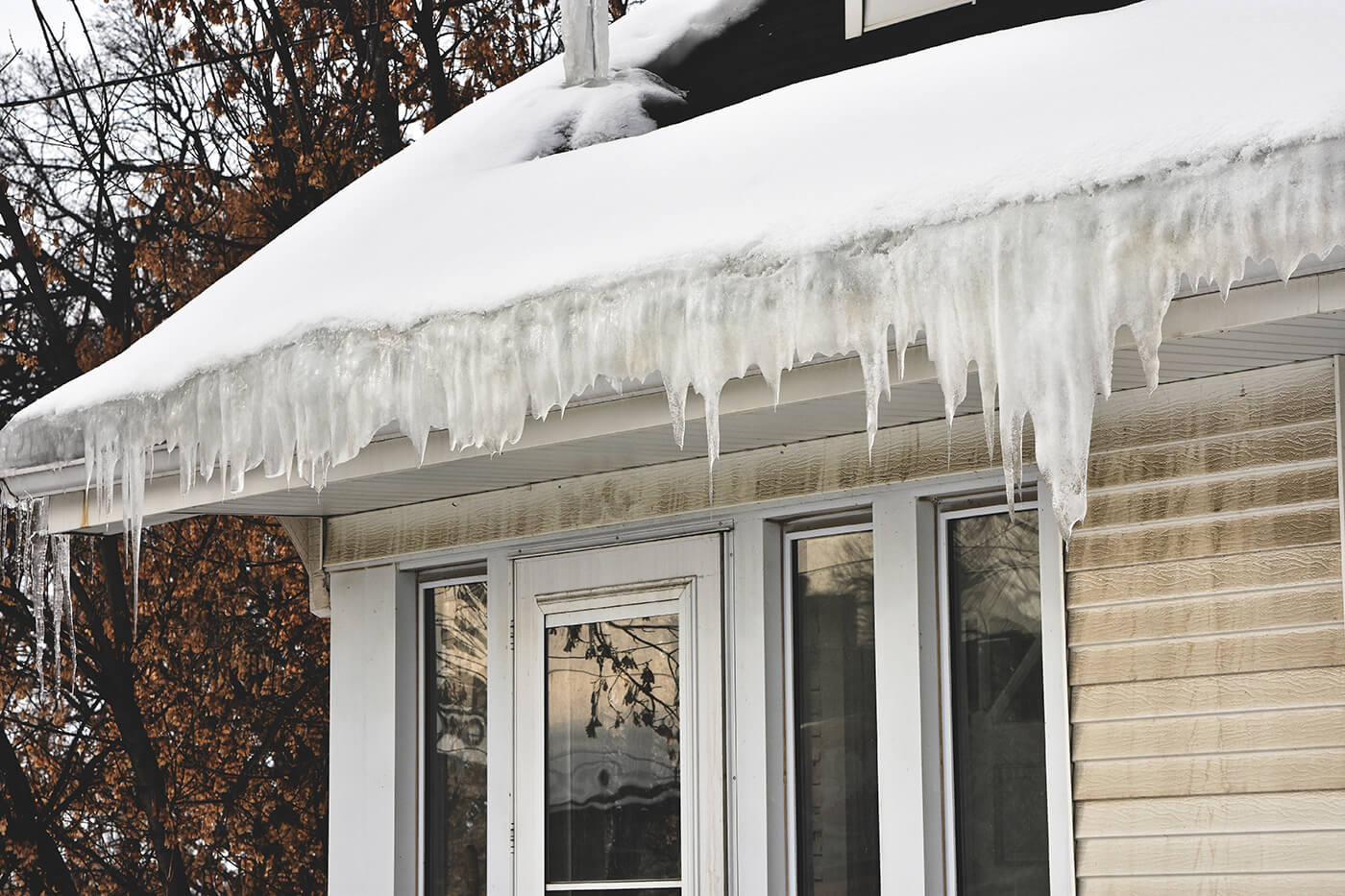Windows can become the perfect environment for mold growth because they often collect moisture. The indoor and outdoor environments meet in this space, resulting in temperature differences that lead to condensation. This moisture, combined with dust and other particles, creates an ideal place for mold spores to grow.
Thankfully, with regular maintenance and a few simple steps, you can easily prevent mold growth on windows. We’ll explain why mold grows on windows and provide practical tips that are easy to implement to keep your windows mold-free.
Why Mold Grows on Windows
<p><p><p><p><p>Mold needs three things to grow: moisture, a food source, and the right temperature.
-
- Condensation: When warm, moist air touches a cool window surface, condensation forms. This moisture can lead to mold growth.
- Humidity: High indoor humidity levels can keep windows and nearby areas damp, causing mold to form on both the inside and outside of windows.
<li><strong>Dirt and Dust: Organic particles like dust and dirt collect on windowsills and frames, giving mold a food source.
Control Indoor Humidity
Use a Dehumidifier
A dehumidifier removes excess moisture from the air, making the environment less suitable for mold growth. Set your dehumidifier to a humidity level of 40%, which is energy-efficient and helps prevent mold. A dehumidifier will not eliminate existing mold; it only prevents new growth by keeping the air dry. Mold becomes inactive in dry conditions but can become active again when damp. Therefore, it’s important to remove any existing mold.
Choose a dehumidifier that matches the size of your space: larger ones for bigger areas and smaller ones for small areas. Look for smart features, like mold resistance, to reduce the chances of mold forming from the air distributed by the machine. Whole-house dehumidifiers connected to your thermostat can be a good option in humid homes. Also, consider the drainage system: portable dehumidifiers have a basin that needs to be emptied regularly, and they stop working when it’s full.
Monitor Humidity Levels
Keep indoor humidity below 60% with a hygrometer, a simple device that measures the moisture content in the air. A hygrometer gives you real-time readings of your home’s humidity levels. You can monitor and control the humidity, ensuring it stays within the optimal range. This helps prevent the conditions that support mold growth. Keep an eye on your hygrometer and adjust your dehumidifier to maintain your home’s humidity level.
Ventilation for Indoor Airflow
Poor ventilation and lack of sunlight can create a damp environment, making windows perfect for mold growth. Proper ventilation and improved indoor air quality reduce moisture and prevent mold. Condensation often occurs when water vapor from cooking and bathing hits the windowsills. Mold can also form if rainwater enters through damaged or poorly installed windows.
To improve indoor air quality, keep windows open and use ceiling fans. Place a fan facing outward in the window to reduce moisture around windowsills. Use exhaust fans in high-moisture areas like bathrooms and kitchens, directing them outside to remove moisture instead of recirculating it indoors.
Reduce Condensation
Set Your Thermostat
Mold grows best when indoor temperatures are above 76 degrees Fahrenheit, and mildew grows best at temperatures below 59 degrees. Keep your heating and cooling temperatures between these ranges to optimize your protection against microbial growth.
Wipe Windows
If windows aren’t well-ventilated or insulated, mold can grow on windowsills, frames, curtains, or blinds. Regularly wiping away condensation is crucial to prevent mold from taking hold.
Upgrade Your Windows
Older windows cause more condensation in your home because they don’t insulate well against outdoor temperatures. If you have single-pane or older double-pane windows, upgrading to new, energy-efficient windows can prevent mold-promoting condensation. New double-pane windows are filled with argon gas and often have a UV-protective coating, reducing temperature differences and the chance of condensation.
When replacing windows, consider the frame material. Aluminum frames conduct temperatures well, making them prone to mold. Wood insulates better but can hold mold spores deep inside and is harder to clean. Vinyl frames are a better choice as they insulate well and are easier to clean.
Cleaning
Clean Windowsills and Frames
Dust is a common cause of mold around windows. Dust contains bacteria, dead skin cells, clothing fibers, pollen, and soil particles. When dust combines with moisture and warmth, mold can grow. Keeping windows closed and uncleaned for a long time increases the risk of mold spores. Regular cleaning helps prevent mold by removing dust. Use soap and warm water to clean dust and debris from your windows.
Remove Existing Mold
If m
old is already present, use a bleach and warm water solution. You may need to repeat the process several times to remove the mold. A gentle scrub brush or a toothbrush can help with tiny grooves. If you prefer not to use bleach, a mixture of warm water and vinegar also works well, especially in sunny areas.
Mold-Resistant Paints
DIY Project
Mold-resistant paints contain potent antimicrobial ingredients that prevent mold from growing on painted surfaces. Using a mold-resistant primer on your windows helps stop mold from penetrating your windowsills. These paints also prevent existing mold from spreading to other parts of the window. Mold often feeds on materials like drywall and wood found on window surfaces, and if left uncleaned for a long time, it can damage the window structure.
Bringing in the Pros
If your windows frequently have mold issues, consider hiring a painting specialist to upgrade your window paint. Choose FDA-approved, mold-resistant paints that are proven to work. These paints protect against new mold growth but won’t remove existing mold, so clean off any mold before applying the paint to your drywall and wooden surfaces.
Work With Experts</h2>
Pr
eventing mold growth on windows involves controlling moisture, keeping things clean, and ensuring good ventilation. By following these tips, you can keep your windows mold-free and create a healthier indoor environment for your family. Stay alert, address problems quickly, and enjoy mold-free windows all year. Even with these preventive measures, mold can still enter your home. That’s where professional help comes in.
can help remove and prevent mold on windows using our patented chemical-free treatments. Our experienced technicians thoroughly clean and sanitize affected areas, ensuring complete mold removal. Additionally, we offer mold-resistant painting services for moisture-prone areas, which helps to prevent future mold growth.



